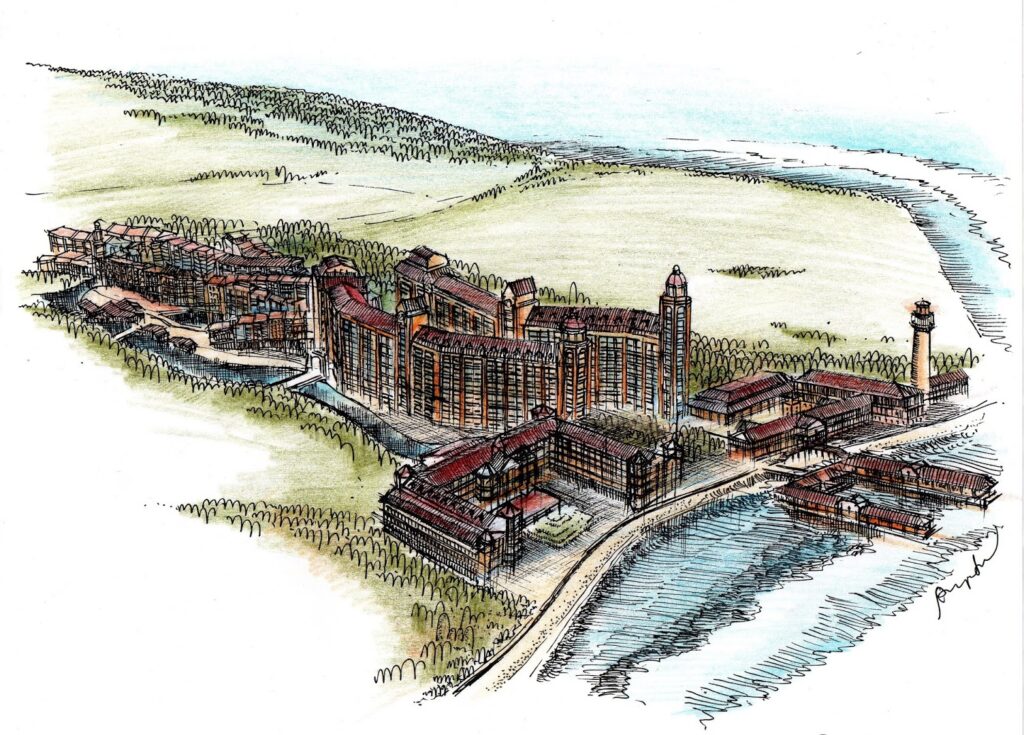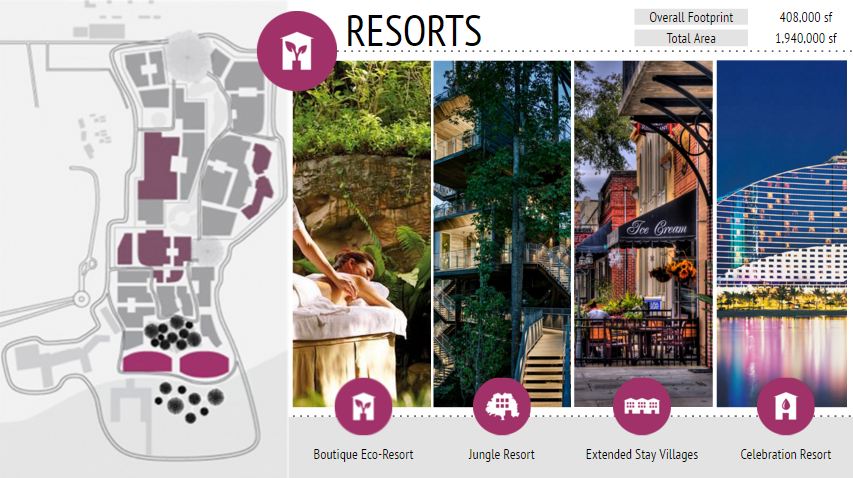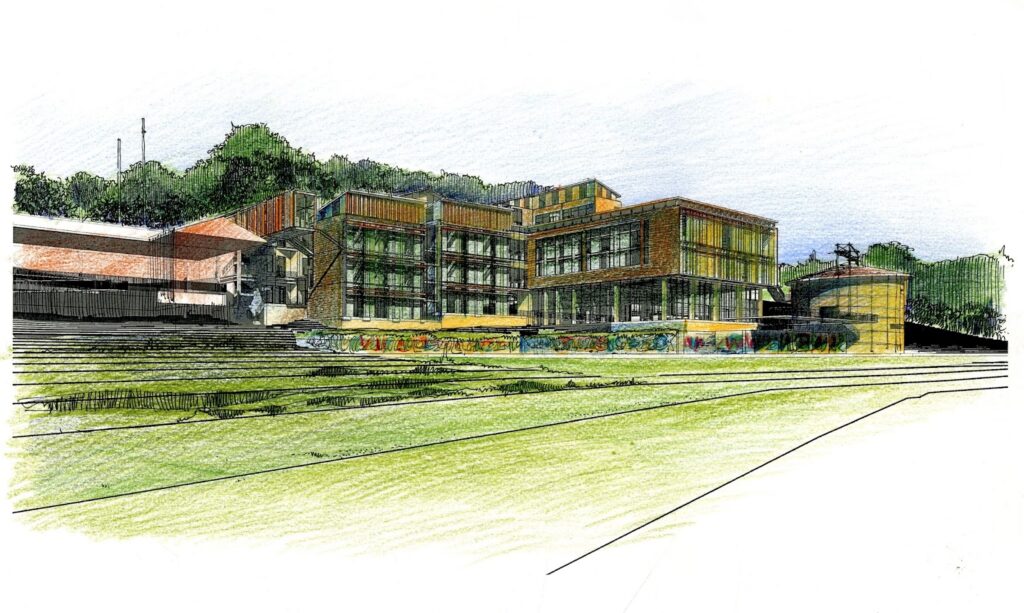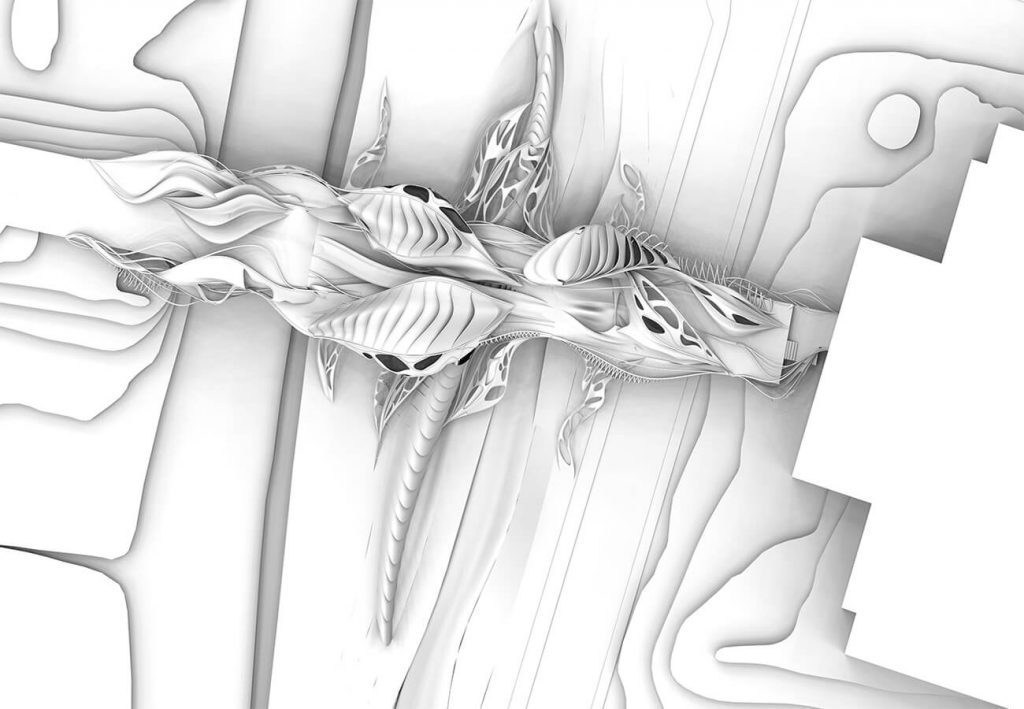RD&E theme resort: The Master Plan Conceptual Idea of the Retail Dining and Entertainment District in South China (Design as a themed entertainment with Sustainable Principles)
The article presents a big picture of the design principles, philosophy and of the theme resort district in South China near Hong Kong, while it is more than this; it is about seeking deeply in the term “utopia” which includes any ideal habitats through North Europe, Asia to North America. In the following articles, we will continue to explore the magic and fantastic points where the utopia district meets the green and sustainable planning principles, and where human high-tech entertainment meets the wild nature.
Disney was planning to build a magnificent central entertainment, commercial, and resorts area which is called Retail, Dining, and Entertainment District in Hong Kong Disneyland Park. The “Future Land” of Disney in Orlando FL was not that successful and one of the major reasons is the initial plan idea by Walt himself was finally changed and never finished. The final project as we see today still has a distance to a real living-entertainment urban district. The more detailed description and arguments could be found in a famous architecture design theory book “The Hannover Principles: Design for Sustainability” and it shows below:
“It must be stressed that putting a model up for display as an ideal tends to separate it from its context and may detract from its exemplary value. Witness “main street USA” at Disneyland, Disneyworld, or Euro-Disney, where something is built that looks like a friendly town, but more resembles a bleak shopping mall hidden behind a quaint facade, where all is for entertainment and consumption, without encompassing the full range of human life which made such a place so significant for those visitors who can remember when towns were more than intersections, more necessary than abstract plans. Later, when Disney introduced EPCOT (the Experimental Prototype Community of Tomorrow) in Florida, they sidestepped the challenge of creating a real community. People do not live there, so visitors are seduced by displays of optimistic forward-looking ideas as advertisements for the giant corporations that pay for them.”
A famous architecture professional academic report called “The Hannover Principles Design for Sustainability” gives us a branch of inspiration in the giant urban and area planning for the future. What environment influence will the district bring with is the current big issue.
The overall plan principle of the theme resort project could be a solution for several of Hong Kong’s urban issues. Having the urbanest density population in the world, Hong Kong needs to find a new way to supply citizens with more living spaces and high quality living environments. One of the biggest issues in Hong Kong is the self-sufficient percentage is extremely lower than in other cities in China. Citizens of Hong Kong need more areas for planting vegetation. With the growth of the population in Hong Kong, many of the planting areas have been taken over by high-density residential buildings.
Besides the typical theme resort of Disney built in the United States, is there a way to supply enough space for both living areas and for vegetation in the limited land? Another biggest issue for the city is low living quality. Many citizens could only live in quite narrow spaces without enough daylighting, fresh air, green areas, and public spaces. Is there a way that could occupy enough sunlight, fresh air, green space, and enough private living space for each citizen? Unlike EPCOT in Florida, the RD&E theme resort project gets the challenge to create a real community, which contains the urban farms, eco-resorts, retails, workshops, tree restaurants, farmer markets, and other numbers of creation and production projects. This urban project needs a response to the issue and actually, it can respond to the issue, on the other hand, the mass project is engaged in prediction and imagination of how we might live in the future into centuries. It should do so by example in such an influential city. That is why this design aim from the outset to link the key elements of human nature, technology, and entertainment through the litmus test of sustainability and eco-city practice.
Design as EXPO, inspirations:
A planning idea could be an innovation example for the City of Hong Kong development
A highly mixed and vertical development urban space, create various social events spaces and public natural area
A growth district, which supplies variety flexible and movable functional spaces will expand for the future purpose
Design research methods:
The following is a list of the research principle on the themed entertainment resort project conceptual planning and design, which presents an unlimited exploration of the civilization, habitat, culture, and custom all around the world in the history line of human beings.
More samples need to be researched and referenced from, such as the eco-resorts in the Caribbean sea and traditional and historical habitats in China
A great challenge of the future cities with entertainment and resorts, sustainable development principles, “utopia” habitat characteristics
samples in North European countries such as… ( the modern and traditional community in Sweden, Demark)
samples in North American (the religion center-based community)
samples in the far east, such as the dining, retail, and entertainment district in Su Zhou China…
samples of the great universities’ campus in the world
samples in most luxury Resort in the world (Rosewood, Four-season…)
“Making A Magic Kingdom” reported by CNN
The Walt Disneyland concept plan report from the Hong Kong government
The following images demonstrate the design process and ideas generating.



